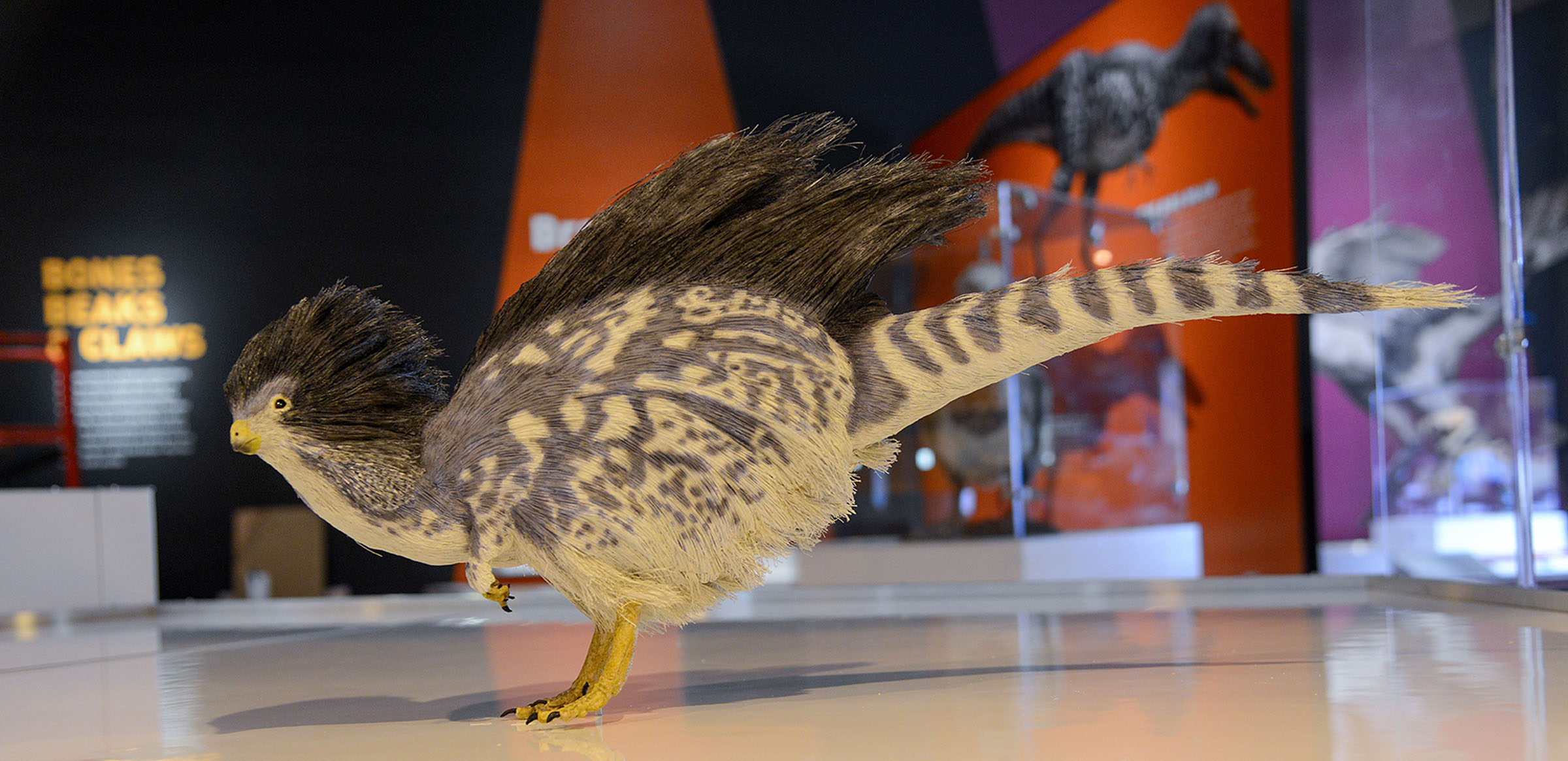Dinosaurs are awesome. We flock to museum halls to see Tyrannosaurus, and run to movie theaters to get a glimpse of our favorite scaly saurians dish it out. I have been a dinosaur fanatic for 18 years now, with no loss of amazement in all things prehistoric.
But even I, the prospective paleontologist, have trouble accepting our primeval predecessors as the feathered animals they were.
Growing with Science and Accepting Change
I bashfully admit that when I heard the announcement of no feathers in Jurassic World, I was glad. What is it that makes society so opposed to tufted “terrible lizards?” I believe it is due to something I would like to call the Suspended Planet Syndrome.
When Pluto was demoted to its Dwarf Planet status, there was an uproar, and not from the science community, but from us, the common folk. We grew up being taught Pluto was a planet, and when that was taken away from us, we were not happy. Like finding out that Santa isn’t real or that the your favorite childhood actor stole money from charity, changing something we grew up knowing, steals a bit away from our childhood. Giving dinosaurs feathers has a similar effect. Yet, we can learn to accept and embrace this fact.
Dinosaurs are no longer an image of failure. They were some of the most successful vertebrates ever to live; they thrived on the planet for over 160 million years. The image of lumbering, sluggish lizards we once viewed as “extinction” is gone. They were fast and agile, warm blooded and intelligent.
Not only were they, they still are.
Meet the Latest Bird Species: Dinosaur
Yes, dinosaurs are still with us today, as birds. Almost all scientists now agree that birds are living dinosaurs. Tyrannosaurus Rex has more in common with a humming bird than a crocodile.
So, where is the proof? And how do we come to terms with downy dinosaurs? The American Museum of Natural History’s summer 2016 exhibit Dinosaurs Among Us succeeds in answering both those questions.
Dinosaurs Among Us tells the story of how one group of dinosaurs evolved into the birds we know today. Upon entrance, visitors can watch a video aptly labeled Transformation, showing the evolution from single cellular life to dinosaur and their metamorphosis into birds. From there, the exhibit is divided into seven parts, each showing the connection between birds and dinosaurs.
AMNH Connects Birds and Dinosaurs
The first part covers nest, eggs, and babies. Here can be seen a Citipati (an oddly turkey looking dino) roosting on its nest and a variety of bird and dinosaur eggs that to the untrained eye are indistinguishable.
The next section is brains, lungs, and hearts, featuring research brand new to the field strengthening the dino-bird connection.
Bones, beaks, and claws features two beautifully preserved specimens of oviraptorid dinosaurs cheekily referred to by scientists as “Sid and Nancy.”
The following area on feathers features the highlight of the exhibit. A life-sized reconstruction of the recently discovered feathered tyrannosaur Yutyrannus. Roaring at a cast of its original fossil displayed across from it, it is amazing to see this tyrant lizard in the fur. Highlighted on its fossil are the quills that give this feathered find such significance.
Make sure to look up in the flight portion to see Microraptor models gliding above. Also featured is an interactive game called “Will it fly?” Based on biomechanical models, visitors can design their own dinosaur and see if it has the capability to fly.
The final section is called “The New Age of Dinosaurs.” The dinosaur family tree is completed with models of modern day birds. A variety of species is present as a standing testament to the explosion of dinosaur evolution after the extinction of nonavian dinosaurs and the diversity of our over 18,000 species of modern day saurians.
Thriving with Science
Seeing kids design their own flying avian dinosaurs and excitedly climb on the nest of a feathered Gigantoraptor, I realized that the days of the scaly cold-blooded dinosaurs that I had grown up with were done. There was no less wonder in their eyes, if anything more. Dinosaurs were just as amazing with feathers, if not even more so.
As I walked down the steps of the museum and back out onto the city streets, I couldn’t help but stop and stare at a pigeon walking by. Prowling the city streets for scraps it was almost like watching a Tyrannosaurus Rex hunting prey on the Cretaceous plains.
I smiled as I walked away realizing the T-Rex I just pictured had been covered in a coat of downy feathers.
Dear Reader: This page may contain affiliate links which may earn a commission if you click through and make a purchase. Our independent journalism is not influenced by any advertiser or commercial initiative unless it is clearly marked as sponsored content. As travel products change, please be sure to reconfirm all details and stay up to date with current events to ensure a safe and successful trip.



